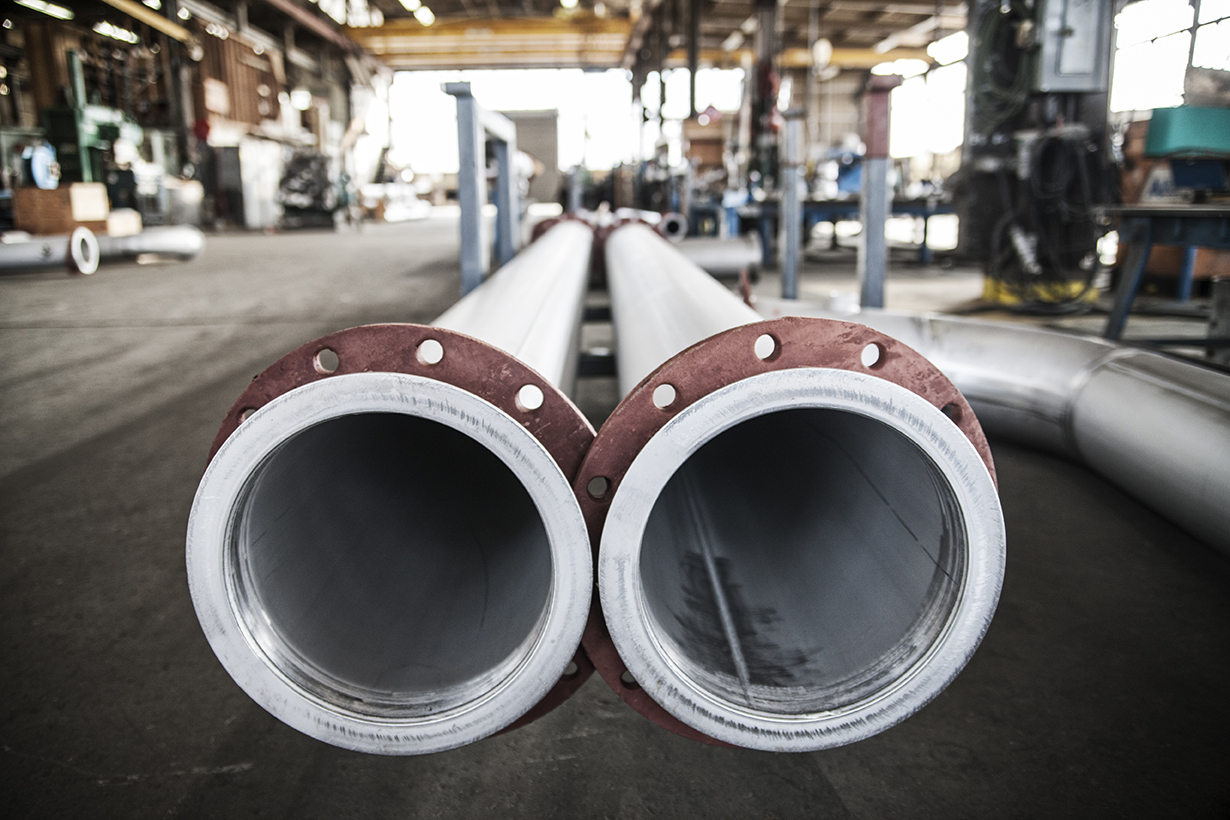Flange bolts play a key role in the structural integrity and sealing capacity of industrial piping systems. When installed incorrectly, they can cause leaks, flange warping, or even catastrophic gasket failure. To avoid unplanned shutdowns and costly rework, it’s important to follow proper installation techniques and bolt tightening sequences that ensure consistent gasket compression.
Why Proper Flange Installation Matters
The performance of any flange-gasket assembly depends on uniform pressure across the sealing surface. Uneven tightening, misalignment, or improper bolt selection can all lead to joint failure. This is particularly critical in high-pressure or chemically aggressive environments such as oil refineries, chemical plants, and water treatment systems.
Consistent bolt loading prevents gasket blowouts and helps extend the lifespan of both the gasket and the flange. It also improves safety, reduces maintenance costs, and minimizes the need for frequent re-tightening.
Pre-Installation Checklist
Before starting flange installation, the following checks must be completed to ensure proper preparation:
- Clean flange faces: Remove all dirt, oil, rust, and debris to prevent uneven sealing.
- Check flange alignment: Ensure proper pipe alignment to prevent excessive stress on bolts and gaskets.
- Inspect the gasket: Confirm the gasket matches the flange dimensions and service rating.
- Verify bolt material and length: Confirm compatibility with operating conditions and flange thickness.
- Lubricate bolts and washers: Use an appropriate anti-seize compound or lubricant on threads and under bolt heads to ensure smooth torque application.
Flange Bolt Tightening Procedure
The most reliable way to tighten flange bolts is by using a star pattern and multiple passes at incremental torque values. This approach ensures the gasket is compressed evenly, minimizing the chance of distortion or leaks.
Recommended tightening process:
- Hand-tighten: Insert all bolts and tighten them by hand in a crisscross or star pattern.
- First torque pass (30%): Apply one-third of the final torque value using a calibrated torque wrench.
- Second torque pass (60%): Increase torque to 60% of the target value, following the same pattern.
- Final torque pass (100%): Apply the full target torque value, again using the star pattern.
- Rotational check: Conduct a final rotational pass around the flange to confirm all bolts are evenly tightened to the specified torque.
For flanges with a large number of bolts, using a cross-pattern sequence ensures even gasket load distribution. Always consult the manufacturer’s torque recommendations for the specific gasket and flange being used.
Factors That Affect Gasket Performance
Several variables influence how well a gasket performs after flange bolts are installed. These include:
- Torque accuracy: Over- or under-torqueing can cause gasket damage or insufficient sealing.
- Temperature fluctuations: High heat may cause material creep or bolt loosening over time.
- Vibration or dynamic loads: Can lead to gradual loss of bolt tension, especially in pump or compressor systems.
- Gasket type and material: Spiral wound, PTFE, graphite, and compressed non-asbestos each react differently under stress.
Using calibrated tools and rechecking bolt loads during system start-up helps maintain consistent sealing pressure.
Common Mistakes During Flange Bolt Installation
Even experienced installers can make errors that compromise the performance of a flange connection. Here are the most frequent issues:
- Skipping lubrication: Dry threads create inconsistent torque and uneven load distribution.
- Improper sequence: Not following a cross-pattern can lead to gasket pinching or failure.
- Reusing gaskets: Most industrial gaskets are designed for single use only and degrade after compression.
- Wrong torque settings: Applying excessive force can crush soft gasket materials or damage the flange face.
Ensuring proper training, equipment calibration, and procedural checks can help prevent these problems.
Flange Bolt Types and Their Use Cases
Flange bolts come in a variety of grades, coatings, and configurations depending on the application environment. Selecting the correct type is just as important as the installation method.
| Flange Bolt Type | Best Use Case | Key Properties |
| Grade B7 Studs | High-pressure, high-temperature applications | Heat-treated alloy steel with high tensile strength |
| Stainless Steel Bolts | Corrosive environments such as offshore or chemical service | Resistant to rust, chemical attack, and moderate heat |
| HDG (Hot-Dip Galvanized) | General outdoor and utility piping | Zinc coating provides moderate corrosion resistance |
| Zinc-Plated Carbon Steel | Non-aggressive industrial settings | Budget-friendly with basic protection |
Importance of Washer Selection
Washers are more than just accessories. They help distribute bolt load evenly, prevent galling, and protect flange surfaces during tightening. Flat washers are commonly used under both the bolt head and the nut for balanced pressure application.
Using hardened washers ensures compatibility with high-strength bolts and minimizes the risk of embedding into softer flange materials.
Retightening Recommendations
In systems with high thermal cycles or vibration, bolt relaxation may occur over time. A controlled retorque procedure is often recommended after the system has reached operating temperature and cooled down.
Best practices for retightening:
- Mark each bolt after initial torque to track any movement.
- Retorque only when the system is depressurized and cooled.
- Use the same torque value and star pattern during retorque.
Retightening should be part of a documented maintenance schedule, especially in critical process lines.
Tooling Considerations for Flange Installation
Proper tools ensure accuracy and repeatability in bolt tensioning. Industrial jobs may require more than standard hand tools, especially for large-diameter flanges or high-strength bolts.
Common tools include:
- Calibrated click-type torque wrenches;
- Hydraulic torque wrenches for heavy-duty applications;
- Tensioners for critical pressure-boundary connections; and
- Lubricants approved for bolting operations.
Always inspect tools before use and ensure the calibration is current.
Environmental Conditions and Installation Timing
Temperature, humidity, and weather conditions can all affect flange installation, especially in outdoor or remote sites. For instance, low temperatures may impact gasket compressibility, while rain or dust can contaminate flange faces and bolt threads.
Scheduling flange installation during favorable weather and using protective covers when staging components can help maintain bolt and gasket integrity before final tightening.
Training and Safety in Flange Assembly
Improper bolting is a major contributor to flange leaks in industrial systems. That’s why training and safety protocols must be included in flange assembly practices. Personnel should be trained on torque procedures, gasket types, safety gear, and hazard awareness.
Clear communication, lockout/tagout, and job safety assessments should be conducted before flange installation, especially when dealing with pressurized systems or chemical lines.
How Coastal Resource Group Supports Your Flange and Gasket Requirements
Flange bolt installation may seem straightforward, but reliable performance depends on having the right products and dependable support. Coastal Resource Group is a Texas-based industrial supply company that delivers high-quality flange bolts, fasteners, gaskets, and tools with immediate availability.
Our inventory includes:
- Carbon steel, alloy, and stainless flange bolts in various grades and protective coatings.
- Industrial gaskets that are compatible with HDPE, metal piping, and chemical processing systems.
- Torque tools, lubricants, and accessories for precise flange installation.
- Fusion machines and HDPE fitting kits for jobsite-ready pipe assembly.
We offer fast delivery across South Texas and the Gulf Coast, serving Eagle Ford Shale and remote oilfield locations. Our team is available 24/7 to help you meet deadlines and maintain safe, leak-free systems.
Need flange bolts or gasket materials for your next shutdown or expansion? Contact Coastal Resource Group today for fast quotes, reliable supply, and expert service you can trust.


